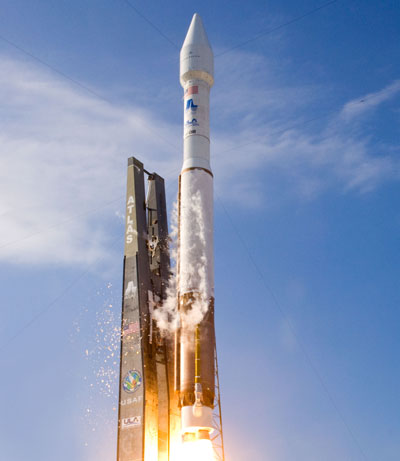The Emperor needs new clothesby Brian Horais
|
| The Achilles heel of a mature industry is the erosion of its ability to innovate. Innovation is taking a back seat in the US space industry and the Emperor’s clothes have become tattered. |
We are no longer the world leader in the use of small satellites for innovative space research and development. The European community eclipsed our capabilities to launch small satellites in the 1990s when they developed the Ariane Structure for Auxiliary Payloads (ASAP) for the Ariane 4 launch vehicle. They launched more than twice the number of free-flyer small satellites in the 1990s than the premier US small payload launch organization of that era, the USAF Space Test Program (17th AIAA/USU Conference on Small Satellites, SSCO3-III-I, pg. 4). Many new international space organizations got their start by launching research satellites with the Ariane ASAP. Today US universities and small companies are forced to seek launch services for their small satellite payloads with foreign providers due the lack of affordable US secondary payload launch opportunities.
The US has simplified its launch fleet and now relies heavily on the Evolved Expendable Launch Vehicle (EELV) for a broad range of launches. Despite the presence of excess launch margin on many EELV launches, small satellites are seldom flown as secondary payloads. As a result we are missing opportunities to develop new space technologies. The US space industry needs to clothe itself in new capabilities to support more frequent launch opportunities for space research and development and revitalize the seed corn of our space industry: innovation from small businesses and universities. Innovation in space requires the ability to design, test, fail, retest, and learn from failure in rapid fashion. The Chinese have discovered this basic principle that the US learned very well in the 1960s. If the US wants to maintain our dominance in the world space community, several steps need to be taken to revitalize the emperor’s wardrobe:
- A national initiative needs to be taken to significantly expand the infrastructure, processes, and frequency of launch opportunities for small research and development payloads.
- A government R&D organization needs to be designated to take the lead on this very important initiative.
- The US launch industry needs to adopt a new attitude towards secondary payloads; these payloads should be embraced as the future of the US space industry not shunned as too much trouble, risk, and bother.
- Funding needs to be allocated to conduct the non-recurring engineering and development needed to implement a routinely available secondary payload process on launch vehicles such as the EELV. Secondary payload launch costs need to be implemented that are commensurate with the small satellite market. Range safety procedures and costs need to be standardized and minimized for recurring standardized secondary payloads.
- The US government needs to embrace the fact that the space R&D community must continually be fed by a new supply of motivated and talented engineers and scientists. This supply will continue to dwindle if the sources of space innovation are not revitalized with a new wardrobe for the Emperor; the US space industry.
The US space industry is a principal positive contributor to our balance of trade. Erosion of this key industry by failing to foster its innovative foundations could have dire results in the long run. We need to resurrect the innovative spirit from the US space race in the 1960s and significantly expand our abilities to conduct high-risk research and development in space. Increasing the frequency and availability of secondary payload launch opportunities provides a clear path to achieve this goal.
